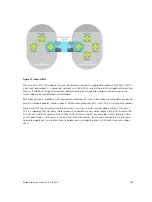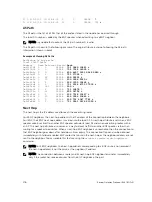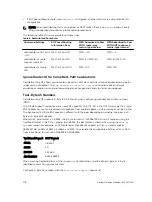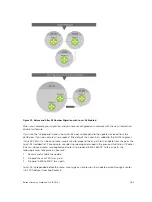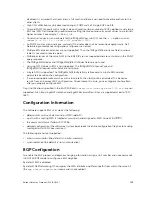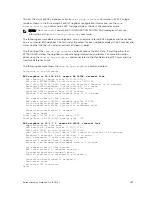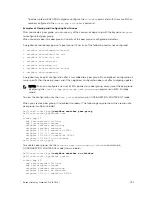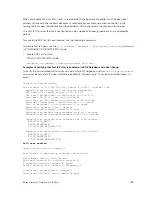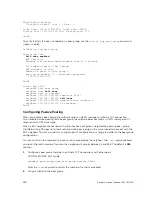
router bgp 100
bgp asnotation asdot+
bgp four-octet-as-support
neighbor 172.30.1.250
local-as 65057
<output truncated>
Dell(conf-router_bgp)#do show ip bgp
BGP table version is 31571,
local router ID is 172.30.1.57
<output truncated>
AS-PLAIN
Dell(conf-router_bgp)#
bgp asnotation asplain
Dell(conf-router_bgp)#sho conf
!
router bgp 100
bgp four-octet-as-support
neighbor 172.30.1.250
local-as 65057
<output truncated>
Dell(conf-router_bgp)#do sho ip bgp
BGP table version is 34558,
local router ID is 172.30.1.57
<output truncated>
Example of the Running Configuration When AS Notation is Disabled
AS NOTATION DISABLED
Dell(conf-router_bgp)#
no bgp asnotation
Dell(conf-router_bgp)#sho conf
!
router bgp 100
bgp four-octet-as-support
neighbor 172.30.1.250
local-as 65057
<output truncated>
Dell(conf-router_bgp)#do sho ip bgp
BGP table version is 28093,
local router ID is 172.30.1.57
AS4 SUPPORT DISABLED
Dell(conf-router_bgp)#
no bgp four-octet-as-support
Dell(conf-router_bgp)#sho conf
!
router bgp 100
neighbor 172.30.1.250
local-as 65057
Dell(conf-router_bgp)#do show ip bgp
BGP table version is 28093,
local router ID is 172.30.1.57
AS Number Migration
With this feature you can transparently change the AS number of an entire BGP network and ensure that
the routes are propagated throughout the network while the migration is in progress.
When migrating one AS to another, perhaps combining ASs, an eBGP network may lose its routing to an
iBGP if the ASN changes. Migration can be difficult as all the iBGP and eBGP peers of the migrating
network must be updated to maintain network reachability. Essentially, Local-AS provides a capability to
the BGP speaker to operate as if it belongs to "virtual" AS network besides its physical AS network.
The following illustration shows a scenario where Router A, Router B, and Router C belong to AS 100,
200, and 300, respectively. Router A acquired Router B; Router B has Router C as its customer. When
Router B is migrating to Router A, it must maintain the connection with Router C without immediately
updating Router C’s configuration. Local-AS allows this behavior to happen by allowing Router B to
appear as if it still belongs to Router B’s old network (AS 200) as far as communicating with Router C is
concerned.
180
Border Gateway Protocol IPv4 (BGPv4)
Summary of Contents for Z9000
Page 1: ...Dell Configuration Guide for the Z9000 System 9 7 0 0 ...
Page 80: ...grub reboot 80 Management ...
Page 128: ... 0 Te 1 1 Te 1 2 rx Flow N A N A 128 Access Control Lists ACLs ...
Page 491: ...Figure 70 Configuring OSPF and BGP for MSDP Multicast Source Discovery Protocol MSDP 491 ...
Page 496: ...Figure 73 MSDP Default Peer Scenario 1 496 Multicast Source Discovery Protocol MSDP ...
Page 497: ...Figure 74 MSDP Default Peer Scenario 2 Multicast Source Discovery Protocol MSDP 497 ...
Page 498: ...Figure 75 MSDP Default Peer Scenario 3 498 Multicast Source Discovery Protocol MSDP ...
Page 760: ...Figure 100 Single and Double Tag TPID Match 760 Service Provider Bridging ...
Page 761: ...Figure 101 Single and Double Tag First byte TPID Match Service Provider Bridging 761 ...


